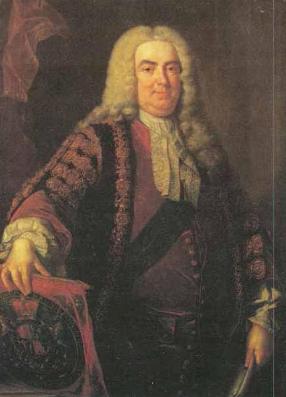Prime Path
| Time Limit: 1000MS | Memory Limit: 65536K | |
| Total Submissions: 10344 | Accepted: 5907 |
Description
 The ministers of the cabinet were quite upset by the message from the Chief of Security stating that they would all have to change the four-digit room numbers on their offices.
The ministers of the cabinet were quite upset by the message from the Chief of Security stating that they would all have to change the four-digit room numbers on their offices.
— It is a matter of security to change such things every now and then, to keep the enemy in the dark.
— But look, I have chosen my number 1033 for good reasons. I am the Prime minister, you know!
— I know, so therefore your new number 8179 is also a prime. You will just have to paste four new digits over the four old ones on your office door.
— No, it’s not that simple. Suppose that I change the first digit to an 8, then the number will read 8033 which is not a prime!
— I see, being the prime minister you cannot stand having a non-prime number on your door even for a few seconds.
— Correct! So I must invent a scheme for going from 1033 to 8179 by a path of prime numbers where only one digit is changed from one prime to the next prime.
Now, the minister of finance, who had been eavesdropping, intervened.
— No unnecessary expenditure, please! I happen to know that the price of a digit is one pound.
— Hmm, in that case I need a computer program to minimize the cost. You don't know some very cheap software gurus, do you?
— In fact, I do. You see, there is this programming contest going on... Help the prime minister to find the cheapest prime path between any two given four-digit primes! The first digit must be nonzero, of course. Here is a solution in the case above.
1033The cost of this solution is 6 pounds. Note that the digit 1 which got pasted over in step 2 can not be reused in the last step – a new 1 must be purchased.
1733
3733
3739
3779
8779
8179
Input
One line with a positive number: the number of test cases (at most 100). Then for each test case, one line with two numbers separated by a blank. Both numbers are four-digit primes (without leading zeros).
Output
One line for each case, either with a number stating the minimal cost or containing the word Impossible.
Sample Input
3 1033 8179 1373 8017 1033 1033
Sample Output
6 7 0
题意:
给出 N (<= 100)个 case,后每个 case 都给出两个四位数 A 和 B ,问最少需要将 A 经过多少次变化才能变成 B,每次变化只能变一位数,且每次得出来的数都必须为素数。
思路:
数学 + 搜索。首先先预处理好素数,再保存1000 ~ 9999之间的素数,并每个素数都对应着一个编号,并且转化成图,图用邻接表保存,每个数都有一个出度,指向的是与其相差一位的数。后给出 A 和 B 就是寻找 A 到 B 的最短路,故用 BFS 找最短路即可,若不预处理事先转化成素数图,在 BFS 中再一个个找的话,无疑会 TLE 的。
AC:
#include <cstdio>
#include <queue>
#include <map>
#include <string.h>
#define MAX 10000
using namespace std;
typedef struct {
int num,step;
}node;
node no[MAX];
int pri[MAX],pri_num[MAX];
int fir[MAX],next[MAX * 2],v[MAX * 2];
int vis[MAX];
int pri_sum,ind;
void add_edge(int f,int t) {
v[ind] = t;
next[ind] = fir[f];
fir[f] = ind;
ind++;
}
bool test(int a,int b) {
int sum = 0;
while(a && b) {
if(a % 10 != b % 10) sum++;
if(sum >= 2) return false;
a /= 10;
b /= 10;
}
return true;
}
void solve() {
memset(pri,0,sizeof(pri));
memset(fir,-1,sizeof(fir));
pri_sum = 0;
ind = 0;
pri[1] = 1;
for(int i = 2;i * i < MAX;i++) {
if(pri[i]) continue;
for(int j = i;j * i < MAX;j++)
pri[i * j] = 1;
}
for(int i = 1000;i <= 9999;i++)
if(!pri[i]) pri_num[pri_sum++] = i;
for(int i = 0;i < pri_sum;i++)
for(int j = i + 1;j < pri_sum;j++) {
if(test(pri_num[i],pri_num[j])) {
add_edge(i,j);
add_edge(j,i);
}
}
}
int BFS(int st,int en) {
if(st == en) return 0;
queue<node> q;
memset(vis,0,sizeof(vis));
while(!q.empty()) q.pop();
node now;
now.num = st;now.step = 0;
q.push(now);
vis[st] = 1;
while(!q.empty()) {
now = q.front();q.pop();
int num = now.num,step = now.step;
//printf("%d %d\n",pri_num[num],step);
for(int e = fir[num];e != -1;e = next[e]) {
int vn = v[e];
if(!vis[vn]) {
node in;
in.num = vn;in.step = step + 1;
if(vn == en) return in.step;
vis[vn] = 1;
q.push(in);
}
}
}
return -1;
}
int main() {
int n;
solve();
scanf("%d",&n);
while(n--) {
int s,e,res;
scanf("%d%d",&s,&e);
for(int i = 0;i < pri_sum;i++) {
if(pri_num[i] == s) s = i;
if(pri_num[i] == e) e = i;
}
res = BFS(s,e);
if(res == -1) printf("Impossible\n");
else printf("%d\n",res);
}
return 0;
}






















 374
374

 被折叠的 条评论
为什么被折叠?
被折叠的 条评论
为什么被折叠?








